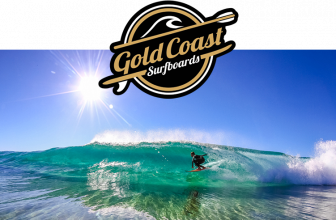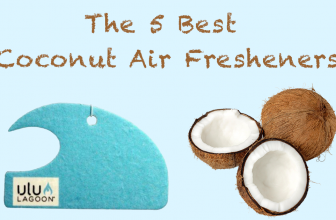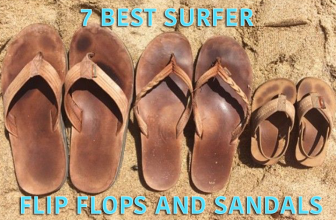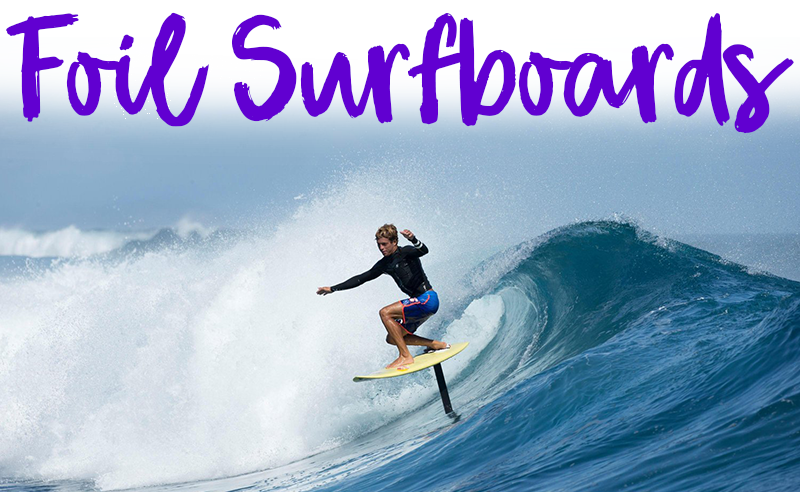
Before we begin this article, you should know that foil surfboards are very different than regular surfboards, whatever type of board whether it be a shortboard or longboard.
More...
While they are truly not comparable, we do find foil surfboards to be new and exciting and the future of watersports. For the entirety of surfing history, taking a surfboard out was really only possible if there were enough waves to surf it on.
Foil surfboards have changed that. Riding a foil surfboard gives you a feeling like no other and almost feels like it works naturally without tons of effort. Most surfers that we know don’t know much about foil surfing, as there are only a few prominent foil riders out there.
That’s why we’re going to teach you all you need to know about this innovative sport so that you can go and experience it for yourself!
What is a Foil Board?
A foil surfboard is made out of a number of components, one of which you will probably find very familiar.
The familiar component is the surfboard that you plant your feet and ride on top of, and the unfamiliar component is the hydrofoil.
Without going too much into the science of it, hydrofoils are essentially wing-like structures that are mounted atop a strut.
You’ve likely seen hydrofoils on catamarans, which is the reason they float atop the water.
The wings help to lift you atop the water’s surface to not only take the surface of the water out of the equation, but to allow you to pick up speed using your body only.
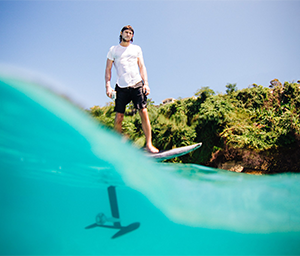
How Does a Foil Board Work?
So to explain how this thing works, the main piece of information you need to know is that the hydrofoil lifts you out of the water to cut friction out of the equation, just as a hydrofoil would like the hull of a boat out of the water.
By doing this, you don’t have to worry about cutting through, essentially eliminating the needs for height in a wave to push you along.
Rather, you are tapping into the energy of the wave to pick up speed or hold back.
The wings are probably the most important part of the board, and if you get a look at them outside of the water, you’ll notice they look just like the wings of an airplane.
They help to diver water and put pressure on top of it. Because you push down on the water, the board then moves up. Physics baby!
How to Surf With A Foil Board?
If you want to get a solid visual of how to really ride one of these things, check out Laird Hamilton or Kai Lenny. Both of them are masters of the foil and have been seen riding them around in everything from big waves to no waves. The cool thing about riding a foil surfboard is you can go to just about and spot you can think of to try it out. If you get a foil surfboard, you can start hitting the breaks that nobody goes to.
You can paddle this out just like you would any other surfboard though don’t actually start paddling until the water is just about up to your neck unless you want the foil dragging on the ocean floor. We would recommend getting it out into mellow whitewater to begin with so you have some energy underneath you, and then stand up and us the foil to pick up speed. Even many veteran surfers can’t seem to understand the mechanics of these things, so we would also recommend starting out with a rope and a jet ski to tow you around like you would with a wakeboard. That way you can at least get a feeling for the board.
That being said, foil surfing is all about finding the proper stance. The mast of the foil board is the long pole that connects the board to foil. It is generally a good idea to have your foot placed right atop that mast to optimize your balance when you pop up. As you get more comfortable, you can begin moving your back foot further back or forward depending on how much you want to pump it. As for your front foot, you’ll want to keep it about shoulder width apart from your back foot. While your back foot is providing balance, your front foot will really be digging into the board to give it pressure. This is what will move you and displace the water beneath you. If you’re a surfer, think of the motion as a constant pumping.
The last thing we will recommend when starting out is placing your traction pads under your feet. This will ensure that your feet are placed properly every time you pop up. While some of us are used to standing up straighter when surfing, you’ll definitely have to get used to the feeling of squatting, as it is the only way you’ll retain the balance you need to ride for long periods of time.
Ways You Can Ride A Foil Surfboard
Regular Waves
Just like a surfboard, you can ride foil boards in regular waves. However, proceed with caution. We would not recommend it unless you are very experienced, as foil surfing in crowded breaks can be extremely dangerous. This is why we recommend taking them out into open waters. That being said, hitting some waves with a foil surfboard can feel amazing. When surfing on regular waves, you’ll definitely want to get up earlier than you would with a normal surfboard so that you can catch the energy under the wave. Begin with waves that are knee high before anything else. The bigger the waves that you surf, the more they will push up on the foil, and the more the nose of the board will fly up in the air causing you to wipeout. No matter the size of the wave, you want to keep the board parallel to the water’s surface by putting pressure on the board with your front foot.
Open Ocean Swells
One of the coolest things we saw in the foil boarding community is when Kai Lenny took his tiny little foil surfboard a few miles off the coast of Maui into what most surfers would refer to as ‘nowhere land’. Seriously, it was as if Kai was the Jesus of surfing in that moment, shredding on water. Because the board mitigates the energy under the water, he was able to have a continuous ride for much longer than any other surfer we’ve seen. So yea, not only are you able to hit waves with your foil surfboard, but you can truly go for a Sunday stroll out in open-ocean swells. That is pretty awesome.
Wakeboard Style
Foil boarding doesn’t stop there. It’s very much possible to surf a foil board just like you would a wakeboard. The most obvious difference is you’ll need some sort of foot attachment to keep you in place. Whether that foot attachment is a pair of bindings or straps is totally up to you. Not only can you pick up tons of speed and get a smooth, continuous ride on a wake, but it is also a great way to get comfortable with your foil because you have a motor to help pull you along. If you really get good at it, you can start busting air back rolls and helicopters like Rush Randle.
Factors to Consider When Buying
Type of Riding You Will Do
The first thing that you’ll want to consider is the type of riding you will be doing. There are differences between kite foils, surf and SUP foils, and wake foils. Kite foils don’t work very well for surfing, as they typically don’t give the necessary lift and the masts are usually too long. It is very important that you get the correct type of foil for the type of riding you will be doing, and consider getting bigger foils to get more lift for riding that is at lower speeds.
Price
Because foiling is still a fairly new sport, getting a foil board can be VERY expensive. A lot of this has to do with the fact that they are carbon rigs, carbon usually being the most expensive material when it comes to surfing. If you can’t seem to cough up the money for a full foil surfboard rig, we would highly recommend just purchasing a foil and bolting it on to the bottom of a board that you buy third party. Don’t worry you won’t be the only one. We’ve seen plenty of guys who have safely jerry-rigged their foil surfboards together and they ride just fine.
Brand Name
While there are many foils out there on the Internet, you definitely don’t want to go cheap, as they can break in an instant when put under pressure. Two brands that we highly recommend looking into are King’s and Lift. Both of them have pretty high price points, though are very hardcore and are used by some of the biggest players in the game. Both companies make boards that are very portable so that you can take them just about anywhere, and you have the option to purchase them in separate parts rather than getting the entire set up. This can be a great way to save money or replace something quickly if it breaks. They also have an array of foils for racing, riding waves, or cruising, so you really have the option to customize.
Warranty
With any product you decide to purchase, make sure that it has a good warranty. Like we said, these things are VERY expensive and you’ll want to make sure you are dealing with a reputable company that can help you in case of any damage. Lift, for example, let’s you ship your wings or boards to them in the case of any damage so that they can fix it and send it back.
Board Size
The thing you’ll want to know is the best foil boards run pretty small, typically under 5’. The smaller the board, the less wind resistance you will get. A smaller board will also grant you with easier maneuverability and control on the edge. The bigger the board, the better the stability that you’ll have. We would recommend getting a larger board if you are planning on taking them out in choppier conditions where you need that extra balance.
Mast Size
If you are planning on using your mast to ride surf or SUP, you’ll want to get one that is fairly small, somewhere around 28”. The smaller the mast, the more the lift that you’ll be able to obtain at lower speeds. If you are just starting out and don’t want to push your luck with getting too much lift, we would recommend getting a mast that is anywhere from 30”-34”. Having a foil that is a bit bigger will help to give you a bit more control and they also work better when waters are a bit shallower. If you are looking for the ultimate in stability, or want to use you mast with a kite, we would recommend getting a foil that is anywhere from 35”-37”. You’ll need a bigger mast so that you can have more stability and drag when being pulled by a kite. You can hike much harder with longer masts. All in all, look for a carbon mast, as they are lightweight, strong, and work great in transferring energy from the board to the wings.
Wing Size
Wings come in all different sizes. There are a few things to know though. If you are a heavier rider, you’ll want to get wings with a larger square inch area. If you’re riding surf or SUP with your wings, you’ll definitely want to get larger wings. Not only are larger wings much easier to learn on, but they also help to get you going fast at lower speeds. If you’re ready to take on some serious foil surfing, try out some wings that are less than 100 square inches. You’ll be able to pick up serious speed that feels unlike anything else. That being said, the smaller the wings, the more energy you’ll need to get yourself going.
Frequently Asked Questions
What are the biggest advantages of foil surfboards?
The biggest advantage of foil surfboards is that you can pretty much take them out in any conditions that would render a regular surfboard useless. You really feel like you are zipping across the water without any traction under your feet. Once you get going, the ride feels much smoother, you’ll be able to turn much more quickly, and you’ll be able to pick up speed that would be next to impossible to get with a regular surfboard.
What are the biggest disadvantages of foil surfboards?
The biggest disadvantage that keeps many foil surfboards out of the water is the fact that they can be very dangerous. Knocking yourself or someone else in the head with the sharp end of a foil can cause serious injury or even death. You have to be much more disciplined with a foil surfboard than with a regular surfboard in that sense. Secondly, they can be very costly to buy and or repair. Speaking of repairs, you’ll need to be very meticulous about checking your foil after every surf session to make sure the shape is solid. Lastly, they are much more difficult to transport unless you don’t mind taking them apart and putting them back together before and after every ride.
Do I need to wear straps when I foil board?
When you start out, it can definitely be nice to have straps to keep your balanced, especially if you’re riding behind a jet ski. Once you get comfortable, we would highly recommend switching over to solid deck pad with good grip so that you can move your feet freely about the board to experiment with balance and pressure.
Is there anywhere I should be riding a foil surfboard?
While they are very versatile, there are a few things you should watch out for when taking your foil surfboard out. For starters, make sure the water is at LEAST 5’ feet deep. If your wings hit a rock or the sand beneath you, it’s game over. This is why we also don’t recommend paddling until you are up to your neck in the water. Secondly, look out for any ocean debris or elements that may get in your way such as seaweed. It’s very easy to get your mast tangled up in a ton of seaweed that will ultimately slow you down.
Final Thoughts
Foil surfboarding is a sport like no other. While it may still be novelty to many, there are the few adventure seekers who are giving it merit.
The learning curve, while difficult at first, is extremely exciting once you figure it out. That being said, have fun and start foiling around. You won’t regret it.


